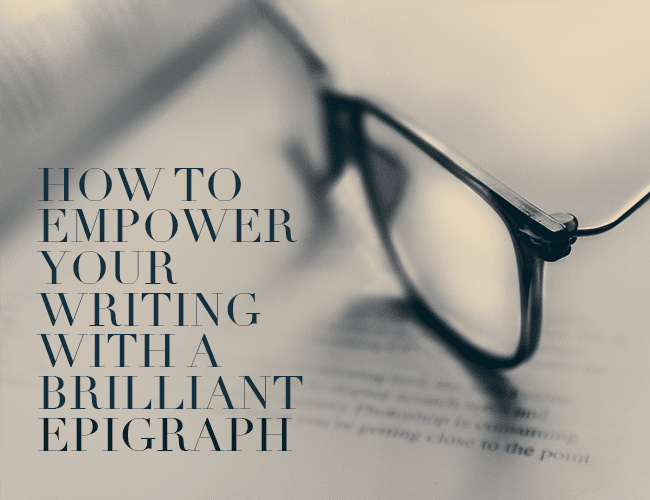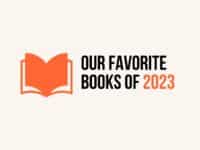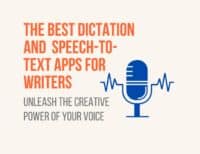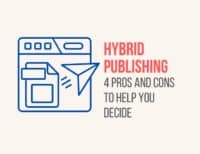With the happy confidence of the innocent, and fresh off a bit of success in the Summer Writing Contest, I would like to share something about a particular interest when I write—the epigraph.

Frankly, I didn't know much about epigraphs until Amanda Forbes Silva, a gifted essayist who gave a little talk about them at a writing workshop, brought them to life for me. Had I been asked, I would have likely confused epigraphs with epitaphs and epigrams, and maybe even the epiglottis, which is apparently some kind of valve that covers the glottis during swallowing, and once malfunctioned somewhere in my throat a few years ago, nearly taking me out.
After a short primer, just to get us on the same page with a working understanding of the epigraph, and a little confessional angst, you will have a couple of practice challenges to engage your new friends.
An Introduction to the Epigraph
The epigraph is simply a well-chosen quotation, set at the beginning of a text. Epigraphs can open essays, books, chapters of a book, or even each story in a book—any writing, really, which suggests its theme.
They can, however, do so much more.
Chosen well, an epigraph offers the writer a kind of “power” to grab the reader quickly, and efficiently. If editors give the writer just a few opening paragraphs to “sell” their work, it seems to me that the perfect epigraph—short, surgical, brilliant, the very first thing seen in the work—is a terrific first contact.
Someone (and I believe it was Toby Lichtig, in The Guardian) put it this way: a good epigraph will make the reader want to “open the door” to the writing inside. It will act as a kind of “shadowy third figure,” somewhere between the author and the reader, drawing the reader in by raising interest, expectations, even questions as to what lies ahead.
One of my favorite authors does just that.
In his Bright Lights, Bright City, Jay McInerney writes the story of the dissipation of a young man in Manhattan. Here is the epigraph that opens the work, from Hemingway's The Sun Also Rises:
“How did you go bankrupt?” Bill asked. “Two ways,” Mike said.
“Gradually and then suddenly.”
In her book, The Art of the Epigraph: How Great Books Begin, Rosemary Ahern finds that many authors seem to follow at least one fairly common strategy in deploying epigraphs, and often all three together: be brief, be funny, be wise. I think McInerney hits all three. His epigraph is brief (and sets the text in motion), it is funny (darkly) and it is insightful (ask any bankruptcy attorney).
Epigraphs With Creative Twists
There are many very interesting, and even tricky, deployments of an epigraph. One of my favorites is F. Scott Fitzgerald in The Great Gatsby. He takes a fictional character named D'Invilliers from his first novel, This Side of Paradise, and then quotes that fictional character as the author of the poem he then uses as the epigraph at the beginning of The Great Gatsby.
It sounds complicated, but here it is:
Then wear the gold hat, if that will move her;
If you can bounce high, bounce for her too.
Till she cry “Lover, gold-hatted, high-bouncing lover,
I must have you!”
—THOMAS PARKE D'INVILLIERS
As Dennis Johnson, co-founder of Melville House publishers, put it, there is something “devastatingly mischievous” about the subverted power and authority of the fictional epigraph.
Very cool. And while there are certain conventions, even “rules,” which the writer should understand, the larger point is simply how much fun a writer can have with the epigraph.
But they can also serve important structural needs, as I discovered in my recent writing. Here's the angst part of the story, the dreaded roadblock along the way, and how we tried to break through.
Epigraphic Choices: A Case Study
I recently collaborated with two other authors to write a series of short stories. Although we had more than enough material for the collection, we soon had a problem.
Our collection of “mostly, mostly true” short stories is about the haphazard misadventures of a bunch of boys, the collection stuffed, as we say in our introduction, with “too much fun.” Although we added some language in our forward warning the readers that “too much” is a concept we didn't understand then, or even now, we felt we needed something else—something to bring a little more order to the collection.
After all, one of our early readers suggested we might want to sell the book by the pound. Ouch.
So we did a little trimming, then more. That was necessary, but, as they say, not sufficient.
We next set out to organize the stories into several sections, or logical groupings, like disciplined courses in a fine restaurant. This was good, too.
But the book still cried out for a little creative “epigraphic power.” Something to ease the way into lots of stories.
Finding the Perfect Epigraphs
We began by asking the kind of questions which, when calling on the epigraph, you should, too. A single, book-wide epigraph? Or how about section epigraphs? Or maybe an epigraph for each story?
The answer for us was pretty easy: we needed to harness our epigraphic power to build focus, so we chose to flag each of our six sections with an epigraph. After all, the whole idea was to build a little focus, and not continue our tradition of “too much.”
We thought six a good balance: a single epigraph better suited a novel, which this wasn't, and an epigraph per story seemed (once again) too much. But we also thought our very first epigraph, which flags our “By Way of Introduction” section, would really do the heaviest lifting, as would any “solo” epigraph. Here it is:
“It was an especially wonderful time to be a noisy moron.”
Bill Bryson said this in his wonderful book about growing up in the 1950's and 1960's (which is our setting) called The Life and Times of the Thunderbolt Kid. We thought it really hit the mark.
Brief, funny, and a great thematic gateway, this epigraph lets the reader know that this will not be a book about boy geniuses. It served, we think, as a pretty good overall “thematic gatekeeper” for the book, giving the reader an honest hint as to what this journey would be all about, but still leaving room for a few more in succeeding sections. And it also seemed to give the reader another clue: the “feel” of the book would be pretty PG-13, a signal we wanted.
I will share just one more epigraph from the book. School was a target-rich place for us to find stupid, and our stories in this section prove it. Of course, rather than actually reading things which would make us smarter, we figured MAD Magazine would be the better ticket. This seemed a good epigraphic sectional choice:
“MAD has been a chronicler of American life unlike any other publication. In fact, I would argue that you can use this book as the text for teaching 20th Century American history—providing, of course, you were being home-schooled by circus clowns.”
Well, we thought that was just about perfect. This quote is from John Facarra in his introduction to MAD for Decades.
Did These Choices Work?
Take a few minutes, and think about our choices critically. Did they draw you in, and make you want to “open the door” to our stories? Did they create interest? In short, were they an effective “gatekeeper?”
In your own work, you may be dealing with story ideas similar to ours, stories about the everyday “writ small” which could use a little boost from a few well-chosen epigraphs. Or maybe you're working on the next great American novel, and just one muscular epigraphic gem, well-chosen for the beginning of your book, will do the trick.
Whatever your writing, try a few out, and see what they can do for you. In our case, the book was effectively “a done deal,” the epigraphs conscripted to save the day, after the fact. But a powerful quote can also serve at the beginning of a writer's journey, as an epigraphic inspiration.
However (and whenever) epigraphs come to your writing desk, just have fun with these little miracles. Maybe these two practice challenges will stir your interest.
Have you ever used epigraphs in your writing? How did you choose the perfect ones? Let us know in the comments.
PRACTICE
For today's practice, you have two challenges: writing, and a quiz.
First, the writing. Take fifteen minutes to think about your current work in progress. Ask these questions: Can you think of an epigraph that will serve as just the right “thematic gatekeeper” for your book, chapters, or individual stories? You may want to think of favorite writers, and dig into their stuff: great writers offer up quotable gems all the time. Try to find a few that might give a boost to your work.
Do your choices do what you want them to do? Or do they smack of a little gratuitous “overkill?” Maybe even a disconcerting mismatch between the “weight” of the epigraph and the writing which follows? (Yes, your epigraphic friends can get you in trouble . . . but not often.)
Share your epigraph in the comments below, and tell us why you chose it.
And now, a literary quiz. Here is a great epigraph which opens a novel:
Lawyers, I suppose, were children once.
It hits all three of the common strategies for epigraphs: it is brief, wise, and funny (in a kind of “dump on the lawyers” way, our national pastime). Can you identify this book, which actually makes you like a lawyer, but also invokes the wonder of childhood, and innocence lost? Here are your choices:
Mario Puzo's The Godfather
John Grisham's The Pelican Brief
Harper Lee's To Kill a Mockingbird
William Landy's Defending Jacob
Scott Turow's Presumed Innocent
Share your answer in the comments. We'll post the answer there shortly. But many of you should nail this one.







Nice post, thanks. I began a book on STORY STRUCTURE with this quote by Nikos Kazantzakis, who authored Zorba the Greek. I wanted to prepare the reader for the idea that in the best fiction, the hero must ‘die.’ So here’s the epigraph:
“Our body is a ship that sails on deep blue waters. What is our goal? To be shipwrecked.”
Answer to the quizz — it’s To Kill a Mockingbird… I think.
I love this advice! Definitely food for thought.
I feel the answer to the quiz is To Kill A Mockingbird, as well.
I had never heard of the term epigraph. Enlightening. Will have to work on this. I’m not sure of the quiz answer, but am guessing To Kill A Mockingbird too, before I read the others below. 🙂 If this is wrong I’m going to say the Pelican Brief. Thanks for a good post. 🙂
I never heard of epigraphs either. Hmmm for my WIP which is about a peasant boy who is conscripted for war in 1515….If I ever see my home again, it will be through eyes that have watched men die.
I really like that one for the book you have in mind. No idea who said it, though.That one would be as good for a Civil War story.
I agree that epigraphs (epigrams are the same thing, BTW) can be very powerful tools in telling a story. I just finished a travel piece about witnessing a pagan ritual still practiced in Scotland and used an epigraph from Scottish poet George Mackay Brown: “The Orkney imagination is haunted by time.” It immediately sets the tone.
I’m surprised more people don’t use epigraphs to end stories, to slam them shut, so to speak. The practice has been used in the past but has fallen out of use.
Thanks for bringing up fictional epigraphs. David Simon used that technique very effectively in The Wire. I may try it in my WIP, a historical novel.
Pretty cool . I am guessing to kill a mockingbird, which happens to be my favorite book of all time, I have read it so many times.
To Kill A Mockingbird is my guess as well, although a feeble one. Did not read the book again this year, so am not really sure. At any rate…..I would like to say that this one would have worked as well for you with the book about boys:
“Boy: noun. A noise with dirt on it.”
My current WIP is a murder mystery with a serial killer who stages his crimes to imitate scenes from Hamlet. I’m planning on using the following quote from the play as an epigram: “Murder most foul, as in the best it is,/But this most foul, strange, and unnatural.” As for the quiz – I’d know To Kill a Mockingbird anywhere.
I only heard the word today but from readings I saw some interesting epigraphs from my favorite bestseller authors and I guess they are short lines but they give much light to a story. For the quiz, I would say, “The Mockingbird. I am still working on my first novel written in English – my second language- and hopefully I will submit it in createspace where I published my first collection of short stories. Thanks for the interesting and very informative read.
It reminds me of a thesis. Thank you.
I’ve never heard of an epigraph before. This very interesting. I think I’m gonna give it a try. My answer to the quiz is to kill a mockingbird. My WIP is about a man who cheated on his wife she disappears, but comes back to exact Revenge. How is this for an epigraph: “karma will eventually come back to haunt you”.
I wondered why Harper Lee used that quotation from Charles Lamb- I’m still at a loss.
Very thought-provoking article. I love those succinct quotations that lead the mind into expansive visions–though I haven’t used any as epigraphs in my own writing. Something to definitely add to the writer’s toolbox. Thank you, John–and thewritepractice.com
Quiz answer guess was ‘To Kill A Mocking Bird’.
Such a great blog topic. I hadn’t really thought much about epitaphs but have run across them reading novels. They’re good hooks that make you curious to find out how the epitaph relates to the story. For my novel, which is a dystopia Sci Fi story, my epitaph would be one of two possible quotes. This one:
“So do the shadows of our own desires stand between us and our better angels, and thus their brightness is eclipsed.”
Charles Dickens, Barnaby Rudge
Or this one:
“The mystic chords of memory…will yet swell …when again touched, as surely they will be, by the better angels of our nature.”
Abraham Lincoln’s First Inaugural Address
For the quiz, my guess is also To Kill a Mockingbird.
Those are two good ones. 🙂
Thanks! 🙂
Live and learn. As with some other commenters, this is a new one on me, but I’m very glad for this info. Of course I’ve seen it done, but just thought “nice quote.”
If I were going to quote someone to kick off a book, I may turn to St Exupery’s Little Prince:
“Come, tigers with your claws; I have my thorns.” She was a very vain little flower.
Or one of Blaise Pascal’s famous ones:
“The heart has its reasons of which reason knows nothing.”
As to the quiz, I wouldn’t know. I thought it might fit with John Grisham’s Rogue Lawyer. 🙂
I think it must have been in “To Kill A Mockingbird.”
So we can use others’ words as our epigraph? I still I have lot of writing to do for my 2nd novel, the prequel to the 1st. I included an amazing poem about the Salvadoran people which my novel is about. Plus I have a prologue. I plan to have a prologue for the prequel too. Hopefully, by the time I’m done, I will have thought of something profound as an epigraph.
Thanks for this article!
Personally, I think it’s Scott Turow’s Presumed Innocent. I’ve never read any of the books, but I just thought that well, the word innocent was in the title. And innocent reminds me of lawyer so maybe it’s that book. But from the other comments, it seems like To Kill a Mockingbird is the right answer. I really do like that epigraph. And I really loved the epigraph for your story. What is it called?
So, an epigraph is like a thesis statement? An engaging, interesting phrase to grab the reader’s attention and pull them into reading further?
That is what I was thinking, too in my post. A thesis gives the topic, and it has to be interesting enough for people to read further.